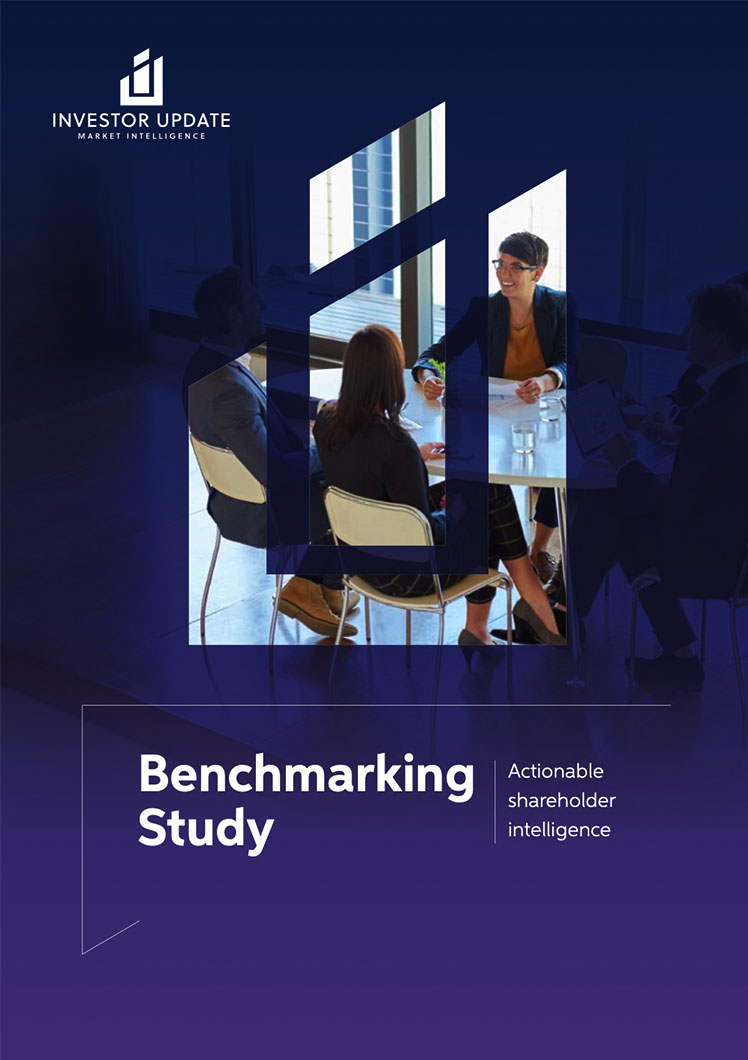Benchmarking
The Benchmarking Study offers a health check for IR with summary conclusions ideal for management or supervisory board level reports.

Investor Update offers a unique and highly customisable Benchmarking Study evaluating the development of a company’s shareholder base and benchmarking your performance against your peers.
Gain access to a unique and highly customisable Benchmarking Study and SWOT Analysis to identify trends, areas of strength and concern, with the aim of setting benchmarking goals (e.g. geographical, investor type, concentration, ESG and more).
Data-driven insights
Our analysis is designed to facilitate a realistic, fact-based, data-driven look at the strengths and weaknesses of your shareholder base across numerous factors and quantify opportunities for improvement or enhancement.
Review past performance to improve the future
We also analyse your IR activities over previous years vs investment levels to draw conclusions on topics such as time spent on maintenance vs targeting new investment, which markets yield the best results, efficiency of interactions, etc.
The study compares your performance
With your peers in key areas such as:
Geographic distribution
Shareholder concentration
Active vs Passive investment levels
Hedge fund and activists ownership development
Sovereign Wealth Fund investment
ESG investment
Shareholder turnover
Investor Sentiment
Discover More
Download our Benchmarking Study brochure.
Find out more about how we develop your customisable Benchmarking Study and SWOT Analysis, giving you the data and information you need to set realistic benchmarking goals.

Case Study
Large-Cap EM Tech
Is our shareholder base appropriate for our size and sector? Are there opportunities by geography or investor type?
Investor Update carried out a comprehensive Benchmarking Study for Large-Cap EM Tech across key aspects of their shareholder base. The study was welcomed as a health check of IR activities but also gave clear conclusions to management on how to address risks and opportunities in terms of concentration, geographical distribution, active vs passive investment, etc. For example, there was concern around increasing hedge fund exposure in the shareholder base, which our analysis showed was true, but also showed a proportional increase across the peer group, so it was a sector phenomenon rather than a company-specific one.
Another area we looked at was mapped IR activities vs geographical pools of capital and actual investment levels to highlight the efficiency of IR interactions.



